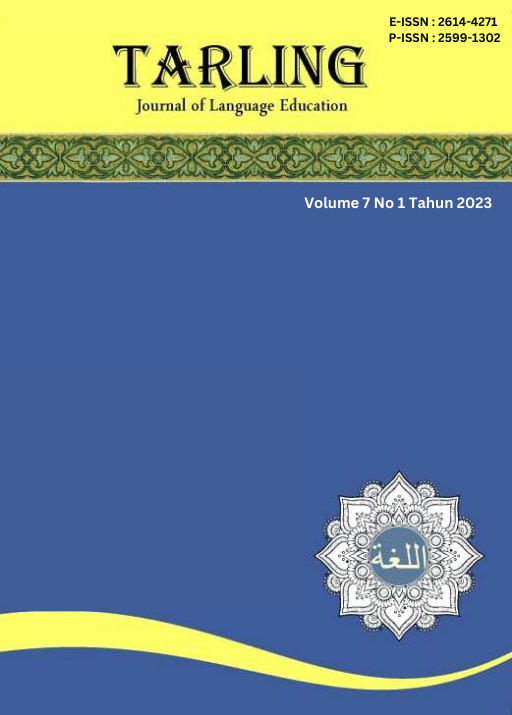Tarqiyat Isti'ab al Mufrodat al 'Arabiyyah wa Ta' tasir Thoriqoh al Istijabah Jasadiyyah al Kamilah li Thullabi al Shof al Sabi' bi al Madrasah al Islamiyyah al Syafi'iyyah al Mutawashshitah
Keywords:
Comprehension, Arabic vocabulary, full physical response methodAbstract
The objectives of this research 1) analyze the application of the T PR method; 2) looking at the influence of the TPR method on student learning outcomes; 3) knowing the advantages of the TPR method from conventional methods. This field research uses a quantitative approach (Pre-Exsperimental research design in the form of Quasi Experimental Design the non equivalent control group design). Its objects are class VII A (experimental class) and class VII B (control class). Data collection techniques are tests and observations. Adata analysis with a two-way One Sample T-test t test to determine the influence of the TPR method on the experimental class and the N-Gain test for a comparative test of the learning outcomes of the TPR method and conventional methods. The results of the One Sample T-test obtained t count 25,729 so that it is greater than ttable 2.201 and sig values. (2 –tailed) which is 0.000 < 0.05, which means that the TPR method is effective. And based on the N-Gain test, it was obtained that the score for the experimental class was 76.9410 or 76.94% (effective category), and the average N-Gain score for the control class was 60.5605 or 60.1% (quite effective). Inconclusion, the TPR method is better than conventional methods for student learning outcomes in improving mastery of muphrodat.Downloads
Published
2023-12-05
Issue
Section
Articles
License
Copyright (c) 2023 Ade Ruswatie Ade, Moh In'ami, Mawaddatun Nafisah

This work is licensed under a Creative Commons Attribution-ShareAlike 4.0 International License.
Authors who publish with this journal agree to the following terms:
- Authors retain copyright and grant the journal right of first publication with the work simultaneously licensed under a Creative Commons Attribution License that allows others to share the work with an acknowledgement of the work's authorship and initial publication in this journal.
- Authors are able to enter into separate, additional contractual arrangements for the non-exclusive distribution of the journal's published version of the work (e.g., post it to an institutional repository or publish it in a book), with an acknowledgement of its initial publication in this journal.
- Authors are permitted and encouraged to post their work online (e.g., in institutional repositories or on their website) prior to and during the submission process, as it can lead to productive exchanges, as well as earlier and greater citation of published work (See The Effect of Open Access).









